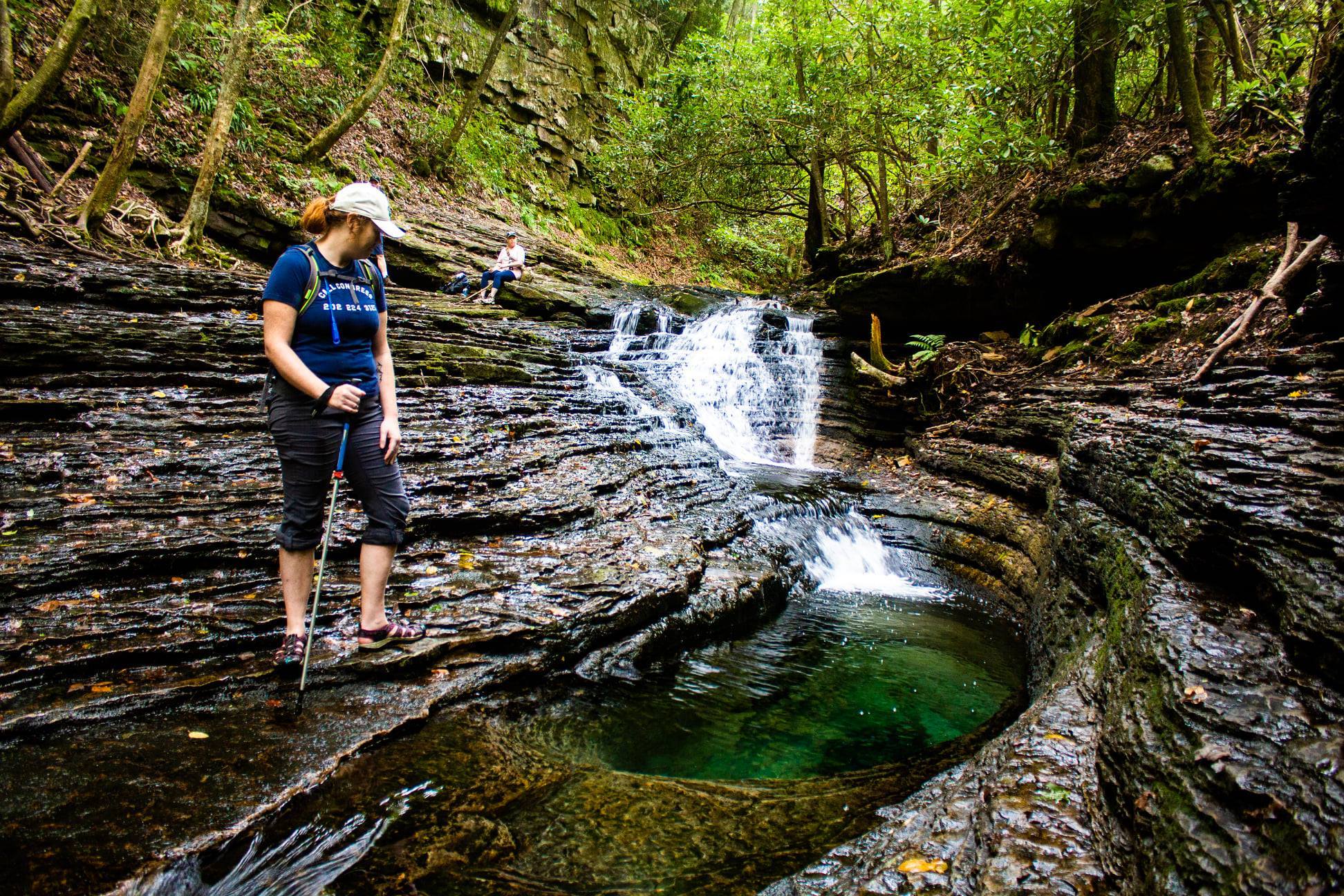Would you dare baptism in the Devil's Bathtub?
Close my eyes and count to three as I anticipate to dive into the deep, ice cold pool of water - The Devil’s Bathtub, located in Southwest Virginia. Jumping in is not recommended for the faint of heart. I stare into the aquamarine abyss and question the life choices that led me to this.

Deciding if I have the courage to jump into the Devil's Bathtub. Photo by Maddie Luchsinger.
The Devil’s Bathtub is a place that no person can stay for very long - it is wicked in the way its cold can take the breath away of the people who dare to jump in. It is the type of cold that sucks the breath right out of your lungs and frightens every skin cell of your body. It is a bathtub-sized pool that is, perhaps, 25 feet deep, full of the fresh spring water falling off the mountains. You’ve hiked 2.5 miles up a mountains, crossing a river 17 times. Your muscles are sore. So jump into the Devil’s Bathtub and find out what happens when you dunk them in ice.
After I was baptized by the Devil in southwest Virginia, I felt cold for days. It was a deeply guttural coldness, like I was thawing slowly from the inside out.

In all the time I’ve spent exploring the world, there are only one of a handful of times I can remember being this cold - in the middle of the night, camping in the desert in North Central Mexico. I was there on a church trip, to build houses in the slums of Tijuana. This was something the church of my youth did a lot in the 1990s/2000s - took groups to do manual labor rural parts of Mexico. That year, in the desert of Baja California, El Nino brought on exceptional rains that flooded our campsite and soaked my belongings. The temperatures at night would reach just above freezing, and the lumber that kept our campfires roaring was wet and ineffective. I have this memory of huddling around the dwindling embers of a dying campfire, desperate to get warm, under a deep sea of stars. I remember feeling like I would never feel warm again.
The second time I’ve felt that cold was whitewater rafting the Upper Youghegheny River in Upper Pennsylvania in the early spring. My group spent the entire weekend camping in a pouring rainstorm, on 50 degree days, and then rafted a flood-stage river of class IV-V rapids. I fell out twice, and swam down a class IV+ rapid called the Meat Cleaver. I remember feeling cold for days after, and vowing to never go whitewater rafting again.
When I jumped into the Devil’s Bathtub, these were the memories that came flooding in. This was a uniquely painful kind of cold. And the thing that was so devilish about it - it was an enjoyable pain.
Maybe I’ve cursed myself, jumping into the Devil’s Bathtub. but in 2020, who can tell the difference?
_______
 Photo by Maddie Luchsinger
Photo by Maddie Luchsinger
How to find the Devil’s Bathtub
—
At the end of Highway 619 just outside of Duffield, Virginia. Duffield is located less than 2 hours from Knoxville, about an hour North of Kingston, Tennessee.
This is a popular hike with an established parking lot at the trailhead. Hikers can choose to go left when the trailhead splits for a 4 mile roundtrip journey to the Devil’s Bathtub, or take a right for a 7-mile loop through the mountains. The trail is clearly marked with a yellow square tag.
Plan for the trail to take an hour per mile, and wear shoes that can get wet. You have to hike across a river 17 times, and you are almost certain to get wet. There are a few areas of treacherous terrain and sharp drops, so keep an eye on young children and dogs at all times.
The hike can be found near Duffield, Virginia, about an hour north of Kingston, TN. I recommend camping at Natural Tunnel State Park, less than an hour away. NTSP has a well maintained and safe campground, good for car campers or RV tows.
Natural Tunnel is a rock formation that has naturally formed in the mountains, created a naturally carved train tunnel. The park offers a fun chairlift to the bottom, a fun activity for families or tired hikers.






